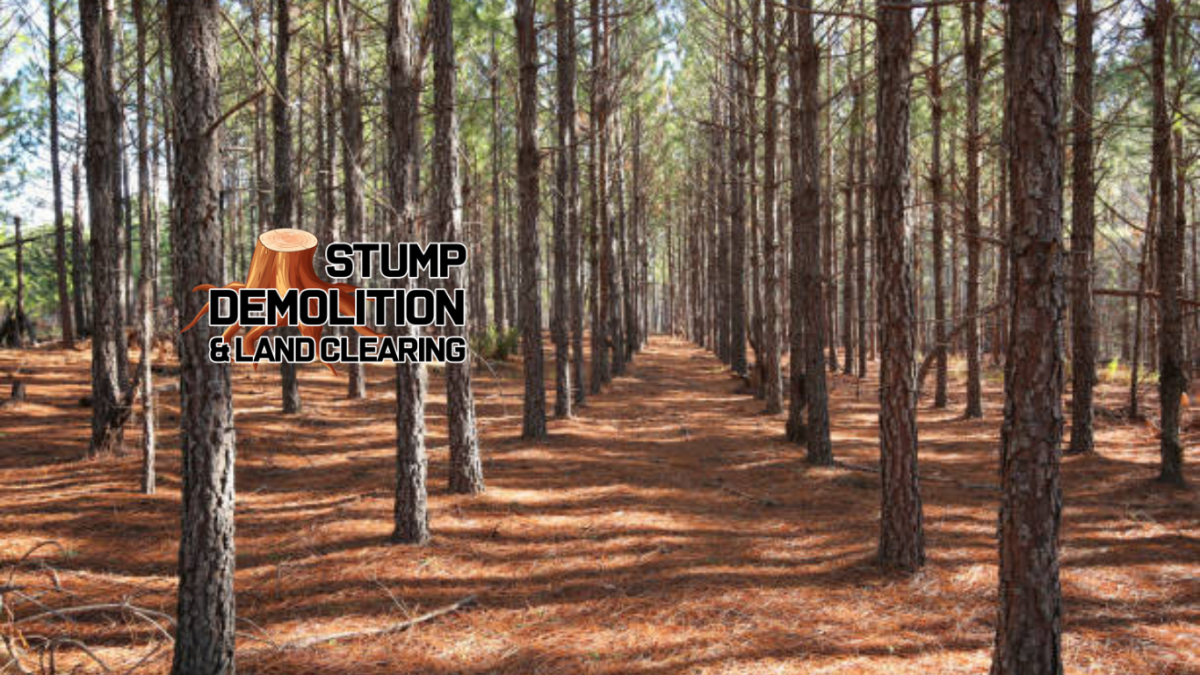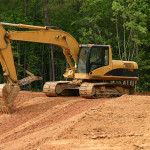Planting After Forestry Mulching: 5 Things to Know

If you own or manage property that needs maintenance, you may be considering forestry mulching, an efficient way to optimize growth and manage soil health. Forestry mulching is a form of land clearing that selectively removes unwanted trees, brush, or other vegetation from your property. By removing and chipping select vegetation, without clearing the land entirely, you will optimize soil health and minimize erosion. If you plan to use the land for landscaping or agriculture, you may have questions about planting after forestry mulching.
Are there things you should know about timing? How quickly will the soil recover from forestry mulching? We’re here to help with a list of five important things to know about planting after forestry mulching.
Planting After Forestry Mulching: 5 Things to Know
- Plan Ahead
When it comes to forestry mulching, it’s best to plan. The process removes trees, and limbs select bushes and other vegetation shreds the material to mulch, and then returns it to the ground. Of course, planning will help you know where to lay the mulch and where you can plant seeds or seedlings.
Where you need plants or trees removed for aesthetic reasons or property enhancement alone, it makes sense that mulch is returned to the ground, as it helps to suppress weed growth and stabilizes the soil. Where you want plants, trees, or crops to grow, however, you will want to minimize mulch laid on the ground.
This primary difference means you will need to have a clear plan for your property, both in terms of the area you would like to have reduced and where you would like mulch to be applied to the soil. With intention and a plan, you will be better prepared for successful planting after forestry mulching.
- Assess Property for Planting Purposes
Sometimes, the equipment used in forestry mulching has an impact on the soil that will need to be addressed before you can start to plant. Whether you intend to plant trees, native plants, or crops, on your newly-cleared land, you will need to first assess the property itself.
Has the soil sustained significant damage? If so, you may need to repair it before you take your next steps. In other words, as you create a plan for planting after forestry mulching, it is important to build a buffer of time, given the possibility that you’ll need to manage soil repair.
Beyond the impact that heavy machinery can have on your property, you will also need a clear understanding of your land. While forestry mulching may have helped to create more space for planting, it’s important to know if the space itself is right for the job. Is there enough drainage for water to flow properly? Is there enough light? Is the soil deep enough for the roots of new plants to gain hold?
With a thorough assessment of your property and which areas will best suit planting, you can decide with confidence which areas will remain open for planting and which will be covered in the mulch.
- Prepare Soil and Area
Once you’ve selected the best areas of your property for planting, you will need to prepare the soil to maximize growth potential. Healthy growth, whether for landscaping or agriculture, depends on the quality of your soil.
Ideally, the area you intend to use for planting will have proper pH and balanced nutrients. A good sign of soil health is its color and texture—healthy soil tends to be darker and able to crumble off the roots of plants you remove. Soil that is not too dense, yet not dry and loose, is ideal for planting. Generally, the presence of earthworms and fungi is a good sign that the soil is fertile and healthy.
Whether the area you want to plant has been damaged by equipment used for forestry mulching or has never had the attention it requires for soil health, this is the time to properly prepare your soil for planting.
If your soil health is good, but the ground is compacted, you may need to give it time to recover naturally. If your soil needs a bit of help, you may need to alter its composition with something simple such as compost, manure, lime, or sulfur. It is best to speak with an expert to best understand what your property may require.
- Time Forestry Mulching to Planting Schedule
Of course, depending on where you live and the purpose of your forestry mulching, your timeline will look different. If your winter season is likely to include ground frost, for example, you will need to plan your planting around the winter months.
Generally, when planning for planting after forestry mulching, you need to allow for enough time for soil preparation without leaving it so long that weeds, invasive species, or other regrowth impair your planting schedule.
Assuming there is minimal damage caused by the equipment needed for forestry mulching, and assuming the soil is healthy, you could begin planting as early as two weeks after the mulching has been done.
Naturally, you’ll also need to work around the best timing for the plants, trees, bushes, or crops that you plan to grow, as each will have seasonal guidelines.
- Be Prepared to Adjust
Of course, when it comes to Mother Nature, you should always be ready to pivot. Not all plans for your property will unfold as you might estimate. Once the selective reduction of forestry mulching has been done, for example, you may realize you need more time to repair your soil, or that the landscape itself is not what you had imagined.
As you build your timeline and plan for costs, remember that planting after forestry mulching is best approached with both a Plan A and a Plan B. As soon as the mulching has been done, you will have a better look at the condition of your soil and your property.
Find The Right Team
If you plan on planting after forestry mulching, it is important to find a team of experts for the job. An experienced company will bring a professional approach to every aspect of forestry mulching, from the first meeting to the clean-up of your property.
The right team will communicate clearly, conduct a thorough assessment of your land and help you know what to expect in the way of timing. They will minimize damage to your soil and property, and efficiently remove select plants, trees, and other vegetation, so you can quickly move ahead with your planting schedule.
At Stump Demolition, we stand by our commitment to you. We serve the whole state of Michigan with a high work ethic, clear communication, and the highest quality work standards. We ensure our jobs are done on schedule and budget. We have plenty of experience working toward our client’s goals, cost-effectively completing the work while protecting the well-being of their land. We take pride in leaving your property in the best possible condition, clear of unwanted debris.
To get started, simply contact us. We will arrange a time to assess your property. If you are thinking of planting after forestry mulching, we will work within your timeline and objectives. Let us help with your fresh start.
Business Name: Stump Demolition and Land Clearing
Phone Number: 248-688-8332
Primary Category: Excavating contractor
CID: 17493723989799983534
Business Profile ID: 4373570029587109095
Maps Link: https://maps.google.com/?cid=17493723989799983534
Search Link: https://local.google.com/place?id=17493723989799983534&use=srp
Website: https://stumpdemolition.com/
Place ID: ChIJ726Wz2UYLiYRrtnBckgxxvI
KG ID: /g/11sxyg_kgl
Latitude: 42.659913
Longitude: -83.3864155
Description:
At Stump Demolition and Land Clearing, we specialize in land clearing, debris hauling, and stump grinding & removal. Our experienced team of arborists can professionally handle everything from small residential properties to large commercial sites.
There are many reasons to choose Stump Demolition for land clearing services in Michigan. We have the experience and expertise to get the job done quickly and efficiently. We also use the latest equipment and technologies to ensure that your land is cleared correctly, with minimal impact on the surrounding environment. In addition, we offer competitive pricing and top-quality customer service.



































